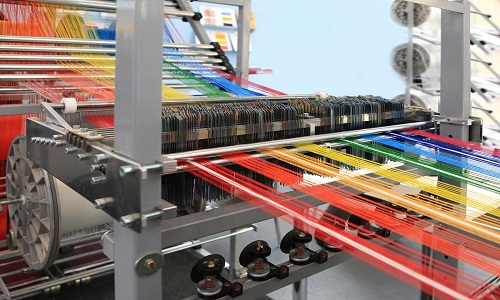"Slowly but surely, Artificial intelligence (AI) is seeping deep into the textile industry production cycles. Till date, several attempts have been made to quantify something as abstract as fashion but all were in vain. Thanks to the fast changing technology landscape, things are finally able to quantify the complexities of abstracts, such as fashion. And as Ambud Sharma, Founder, Escaro Royale Luxury points out, AI is now helping with not only merchandising decisions but also in fine-tuning the supply chain and creating customised and personalised fashion trends."

Slowly but surely, Artificial intelligence (AI) is seeping deep into the textile industry production cycles. Till date, several attempts have been made to quantify something as abstract as fashion but all were in vain. Thanks to the fast changing technology landscape, things are finally able to quantify the complexities of abstracts, such as fashion. And as Ambud Sharma, Founder, Escaro Royale Luxury points out, AI is now helping with not only merchandising decisions but also in fine-tuning the supply chain and creating customised and personalised fashion trends.
Fashion forecasting

With the exponential increase in data and events pertaining to fashion each season, it is impossible to collate and correlate all statistics to understand future trends. AI systems are now being utilised to correlate worldwide data to forecast trends on what merchandise needs to be produced and in what quantity. The typical variables include colours, patterns, designs and geographic tastes in materials. With access to more data and insights, designers can now take help from the AI platforms to produce accordingly. This saves time and money that was earlier wasted in experimentation. The designers can now be more confident in the sales potential of their merchandise.
Consumer insights
It is important to know your customer, and even more important to know their buying and spending behaviour. There are thousands of digital footprints that we leave behind each day when we engage over the Internet – be it reading an article, reviewing a product or signing up for an event. These footprints are a goldmine for the fashion industry – since it helps in identifying the digital persona of a person in the AI world. Using this info, it is possible to accurately map a person’s digital persona to their potential interests. This is especially amplified when an AI system knows what a person bought and when, thus projecting and reinforcing a potential consumer’s interest in a fashion product through targeted advertising. The power of consumer insights allows in gauging market size, thereby helping brands in ascertaining the quantities to be produced.
Retail intelligence
Retail is complex but can be handled seamlessly using AI. A consumer’s retail interaction, be it in a showroom or on a website is extremely important and hear-worthy. The feedback received in real-time from consumers can be extrapolated to ascertain whether demand is being sufficed and if the consumer is looking for something that isn’t available. Also, real-time digital feedback mechanisms can quantify customer satisfaction, thereby assisting in customer retention. This feedback, if correlated correctly, can be used as a guiding tool for future merchandising and retail dominance. Though this can be done manually, it can be done faster, better, cheaper and more accurately by using the processing capability of an AI platform.
Consumer interaction and engagement
AI-based chat-bots are being used now to seamlessly interact with consumers. These chat-bots learn skills over time by interacting with various sets of customers and they are able to handle most questions and concerns on their own not to mention that they don’t change shifts or get tired like their human counterparts, leading to higher consumer satisfaction. Additionally, the information collected through chat-bots is regularly analysed and correlated by AI central commands for deeper insights about consumer base. Customised and automated messaging systems can keep the consumers abreast with the latest offerings of a fashion brand, thereby keeping the customers engaged through the information that is unique & customised to his/her taste.
Inventory management
There is nothing more frustrating than having inventory that doesn’t sell and not having inventory that sells well. This is where AI-based inventory management systems come to the rescue. These systems understand the velocity of sales, many times global sales, and provide insights into what is selling and how fast. More importantly, they help in providing recommendations on inventory optimisation across markets to ensure that the right product is available in the right market. For sized products, like shoes and apparels, these intelligent platforms provide market-wise recommendation in sizing to ensure that the correct set of sizes are available in applicable markets.
In all, something as abstract as fashion can be more-or-less quantified using AI to the point that it may very well one day be able to make automated design and product decisions for current and future trends. For fashion brands, the potential of AI taking over these day to day decisions is very high and will only increase with time. As digital transactions and interactions increase, and more and more data are produced, brands can only look up to powerful AI platforms with humongous data-crunching capacities to assist them to navigate complex digital waters.












